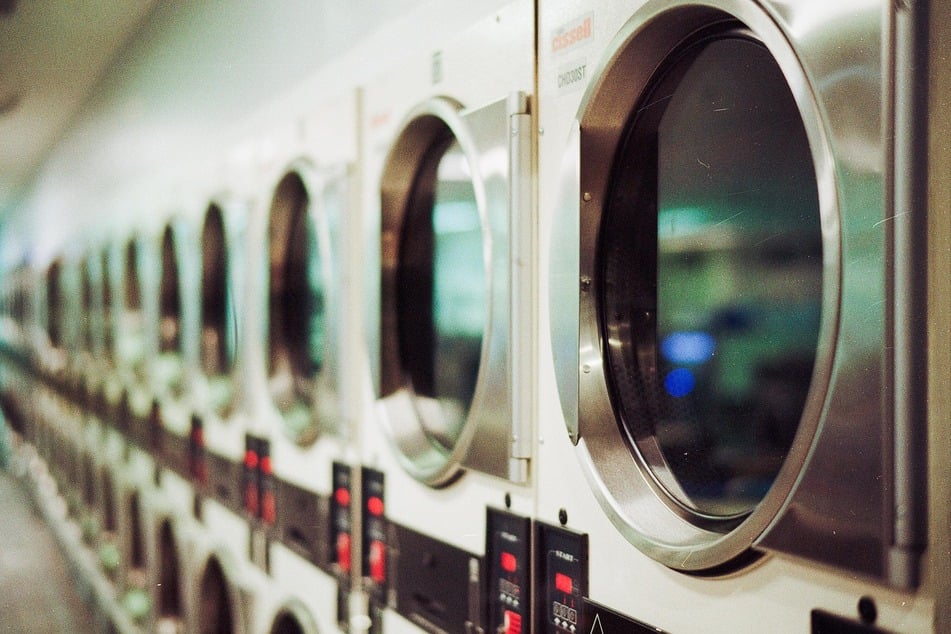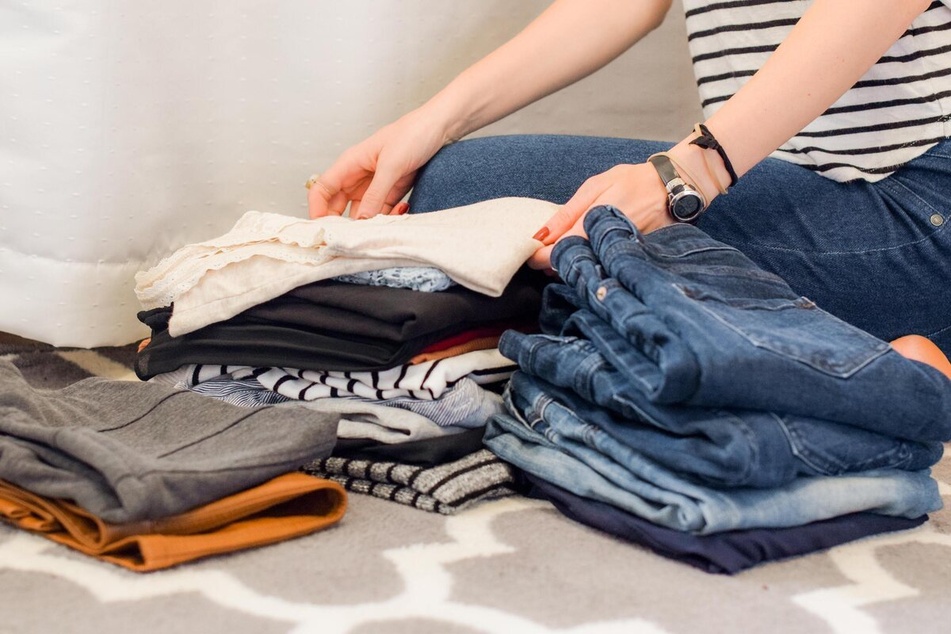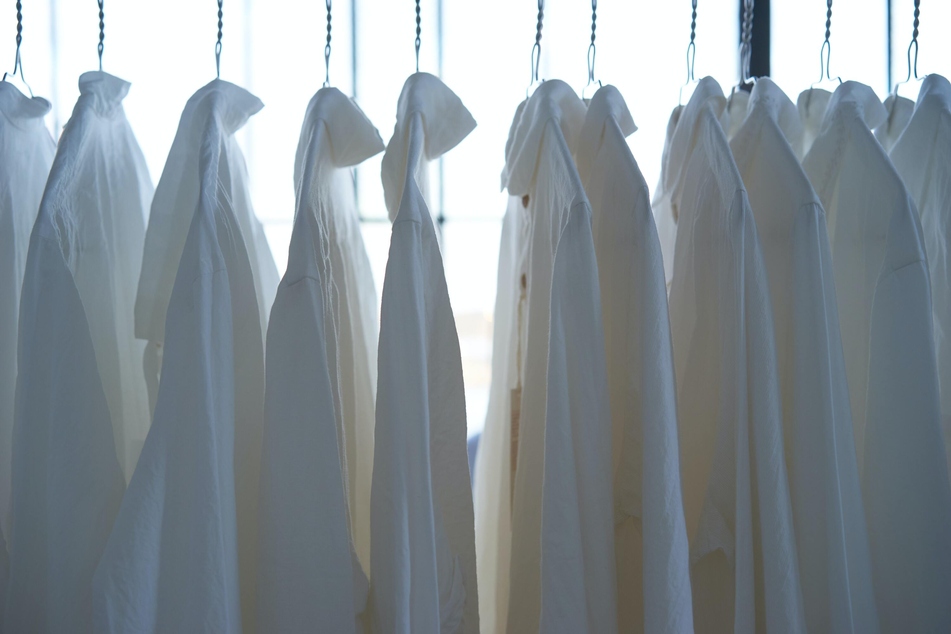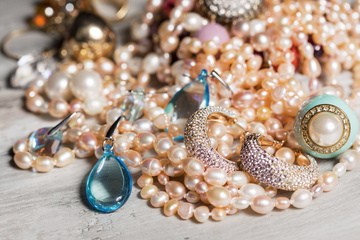National Laundry Day: Tips and tricks for how to do laundry like a pro
Did you know it's National Laundry Day? We're celebrating with a little "how to." Washing your clothes can be a hassle, as those bulkier items take up space. Here's how to do laundry simply and easily, including the best ways to dry, separate, and clean your clothes.

Laundry is like broccoli, it's just a fact of life. No one really likes it, no one really loves it. It's just there – and you have to deal with it.
Funny enough, when a lot of people first move away from home, they have no idea how to get their clothes clean, as they're used to getting their duds washed by a guardian.
If you're one of those many folks, don't you worry: we've got you covered. And even if you're a seasoned pro, these tips are definitely worth trying out.
In this guide, TAG24 takes you through how to do your laundry, including the best way to separate, clean, and then dry your clothes - even in winter!
Let's wash away.
How to do laundry
There are three main steps to doing your laundry properly, each of which play an important role in this most common of endeavors: Separate your clothes, wash properly, and dry.
The whole process can be rather dull, but if you put on some good music, turn it up loud, and have some fun with it, it doesn't feel like a tedious chore.
Curious about how to avoid common laundry mistakes? Let's dive in!
How to separate laundry
Before you go chucking your clothes into the washing machine willy-nilly, you should probably separate them.
Why? Well, because most of us don't particularly desire our fabrics to become a light shade of some random color that has come out of a darker piece that bleeds.
There are two different ways to separate your clothes, both of which are rather important if you want to keep yourself from an unmitigated washing disaster: type of fabric and color of garment. The basic idea is that you shouldn't let things mix. That means:
- Don't let dark, bright, or light colors mix. That means no bright pinks with whites, blacks with yellow, and so on. As a bare minimum, it's best to keep dark and light colored fabrics separated.
- Be careful with your fabric types. Wash anything heavy, like towels, separate from lighter fabrics so that you don't cause scratching or stretching. On top of that, keep lint-shedding fabrics away from other fabrics.
Hot tip: Check your pockets before you wash your clothes! It's one thing to accidentally leave your phone in your pocket, but it's another thing to leave a tissue in there. The destruction wrought by such a tiny mistake will surely have you shaking your fists at the sky.
How much laundry detergent to use
There is one important rule to always follow when doing your laundry, and it's pretty darn simple: read the instructions on the packet, bottle, or box to find out how much detergent to use.
You also need to make that you are using a laundry detergent that is delicate on the fabric you are washing and won't make it glow some fluorescent or unwanted color.
How to use vinegar in laundry
Vinegar can be fantastic for removing stains, softening the fabric, whitening your clothes, and reducing static. If you want to avoid smelling like well-soaked sauerkraut, though, you'll want to make sure you apply that vinegar in the right way.
Here are a few basic rules to follow when using vinegar in laundry:
- Rule 1: For goodness' sake, don't use balsamic vinegar! As the motto goes, "It's white vinegar or no vinegar."
- Rule 2: Only use around 1/4 - 1/2 cup of distilled white vinegar during a wash, no more.
- Rule 3: The best way to use vinegar is to add it to the fabric softener dispenser or manually putting it in during the rinse cycle.
- Rule 4: Feel free to treat stains by soaking the stained material in white vinegar for half an hour before throwing clothes in the washing machine as usual.
Be careful when using vinegar during the washing process, and check if your clothes' fabric will be okay. This information is usually found on the label.
How to use bleach in laundry
Using bleach is a bit of a risk. The most important thing to stress about bleach is that it is very potent. It can severely affect the coloring of your clothing, staining and often destroying the fabric. That being said, bleach can be great for washing whites or bleach-safe fabrics.
When using bleach in laundry, complete the following steps:
- Dilute the amount of bleach you want to use with about 4 cups of water
- Separate your laundry and only include white items or clothes that have been deemed bleach safe
- Turn on your washing cycle, also using detergent
- Around 5 minutes into the cycle, add the bleach
Bleach can do a fantastic job of getting stains out of, particularly on white clothes, sheets, and towels. It improves whites, but can definitely damage other fabrics, so be very careful when using bleach.

How to dry your laundry
While most in the US own a clothes dryer, many overseas have learned to live without it. It can drain your house's energy supply and intensifies your electricity bills.
When drying your clothes in the dryer, use the machine's automatic or timed settings, depending on how much clothes are in the load. Proceed with caution: use a lighter heat setting and less time in the dryer when in doubt, especially with delicate materials. Always refer to the label of a piece of clothing if you're unsure how it should be cleaned.
For delicates and any clothes that could shrink from dryer heat, it's best to use a simple clothes drying rack to hang your clothes.
Here's a few tips and tricks for hanging hacks in the winter and summer.
How to dry laundry in your apartment during winter
When drying clothes on a rack inside your house, keep in mind the hung items will have an impact on the moisture levels and humidity within your apartment or house.
During winter, though, this can actually be a positive thing because the hot air produced by heaters is often dry, which will be dampened by your laundry.
That being said, if the air is too humid or condenses on certain surfaces, it can promote mold growth and cause a whole load of different issues.
To reduce the risk when drying your laundry inside, make sure that you keep your home ventilated and the air temperature warm but not too hot.
Best way to hang dry your laundry

When hanging your clothes dry, a secret tip is to spin your laundry dry in the washing machine first.
This way, you're saving money and energy by not doing a full wash or dryer cycle, and also getting as much moisture out as possible before it gets into the air of the room – which can lead to mildew.
To effectively dry your clothes inside, follow these steps:
Step 1: Spin your laundry well
Make sure that your washing machine has a high speed and thorough spin cycle, so that as little water as possible stays in your laundry afterwards. You don't want your washing to be dripping with water when you take it out, as this will make a mess and also seriously lengthens the amount of time that hang drying will take.
Step 2: Only hang laundry in warm rooms
Make sure that the room in which you are hanging your laundry is warm, relatively dry, and well ventilated. This can be hard to achieve during winter, of course, but is not impossible. Cold air will cause your laundry to take an incredibly long time to dry. If possible, put your clothes in sunlight. This will improve the drying process, shorten the time required, and will make it smell quite nice at the same time!
Make sure to hang your clothes as smoothly as possible over the rack and without overlapping other wet clothes, so they dry thoroughly.
Step 3: Maintain good ventilation
Once your laundry has been spun well and hung up correctly in the right room, it's important to ventilate it. To do this, never place your clothes rack directly against a wall, in front of cabinets, or in any place where the air will not circulate the clothes properly.
During summer, it is a good idea to simply leave the windows open in your home to allow a good amount of ventilation. In winter, though, this becomes a little harder (for obvious reasons). You can also use "shock ventilation", which is where you open all possible doors and windows and allow your home to suddenly and thoroughly ventilate for 5-10 minutes.
However you have ventilated your space, make sure the air is freely flowing for an environment that is conducive to good laundry drying.
And don't forget to keep your washing machine clean and try to take your clothes out as close to the end of your wash cycle as possible, so they don't sit in pile sopping wet.
How long does it take for a load of laundry to dry inside?
The length of time it takes to dry a load of laundry to dry inside depends on the density of the fabric itself, the quality of your washing machine's spin cycle, your home's ventilation and temperature, and the way you have hung the laundry.
As a result, it can take anywhere from a few hours to a few days to dry a load of laundry inside.

How often should you do laundry?
The regularity with which you clean your clothes and do the laundry depends entirely on your habits. If you have a very active life, and sweat a lot, you are going to need to wash more often. If you working from home or are pretty stationary, then you can generally wear things for longer.
For the most part, it is okay to wear your top-layer of clothes for two days before washing, and your undergarments for only one day. When it comes to towels and sheets, it is best to clean them once a week.
Refer to the smell of fabrics for clues on when to wash. If it stinks - throw it in with the dirty laundry!
Why does it smell when I do laundry?
If your house smells awful when you run your laundry machine or are trying to dry hang dry laundry inside, it is quite likely caused by your room being too cold, too damp, or under-ventilated. Try to keep the space aired out, plug in a fan if you need one, and keep the door of the washing machine and dryer open for a few hours after doing laundry to allow the inside of the machine to air out.
With these tips and tricks, your sure to get those dirty laundry skills in tip-top shape!
Cover photo: 123RF / belchonock



